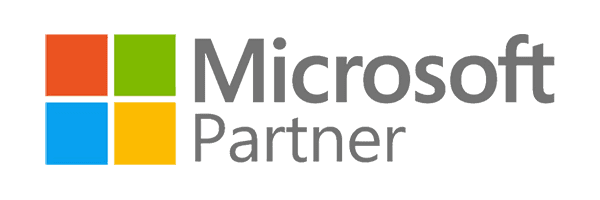Welcome to our beginner’s guide on optimizing PPC campaigns effectively! Tackling paid advertising can feel overwhelming, but with the right strategies in place, you can enhance your results and maximize your budget. In this blog, we’ll explore essential tips and provide a practical checklist to help you navigate the optimization process, empowering you to elevate your campaigns and achieve better performance. Let’s dive in!
Table of Contents
Setting Up Conversion Tracking for Measurable Results
Setting up conversion tracking is essential for measuring the success of your PPC campaigns. By accurately tracking conversions, you can gain insights into which ads, keywords, and landing pages are driving results. Start by defining clear conversion goals, whether it’s sign-ups, purchases, or downloads. Use tools like Google Ads and Google Analytics to monitor user actions and attribute them back to your campaigns. This data helps you fine-tune your strategies, identify high-performing elements, and allocate your budget effectively. In tandem with our PPC Campaign Optimization Checklist for Beginners, establish a routine for reviewing and adjusting your campaigns based on these insights. This will empower you to make informed decisions, ensuring your marketing efforts yield measurable results. Keep refining your approach, and you’ll build a stronger presence in your niche while enhancing your overall campaign performance.
Researching Keywords and Structuring Ad Groups
When setting up your PPC campaign, start with keyword research to find relevant search terms that align with your business. Think about what your audience is searching for and how your products or services meet those needs. Group similar keywords together into ad groups, allowing for more targeted and effective ads. This strategy not only improves your ad relevance but also boosts your chances of conversion. Additionally, consider the concept of topical authority—organizing your ads around specific themes helps establish your brand as a reliable source. Remember to review your PPC Campaign Optimization Checklist regularly, ensuring your keywords and ad groups remain aligned with your goals and improve your overall performance. Keep things simple, and focus on creating ads that truly resonate with your audience.
Writing Compelling Ad Copy That Converts
Creating ad copy that grabs attention and drives conversions is essential for any effective PPC campaign. Start by understanding your audience—know their pain points and desires. Craft messages that resonate with them, using clear and relatable language. Highlight the benefits of your product or service, answering the question, “What’s in it for me?” Incorporate keywords relevant to your niche to boost your topical authority, making your ads more appealing to both users and search engines. Always include a strong call to action to guide potential customers on what to do next. Finally, monitor your campaign’s performance and adjust your strategies as needed to enhance results. By blending engaging copy with optimized PPC strategies, you can create ads that not only attract clicks but also convert visitors into loyal customers.
Optimizing Landing Pages for User Engagement
Optimizing your landing pages is key to boosting user engagement and enhancing your PPC campaigns. Start by ensuring your content aligns closely with the keywords you’re targeting. This establishes topical authority, making your page a go-to resource on specific topics. Use clear, compelling headlines and concise calls to action to guide visitors seamlessly toward conversion.
Make sure your landing page is user-friendly—mobile-optimized, fast-loading, and visually appealing. Incorporate relevant entities and keywords naturally throughout the content, which can improve your visibility in search results. Finally, A/B test different elements to see what resonates best with your audience. By creating a focused, engaging landing page, you’ll not only improve user experience but also maximize the effectiveness of your PPC efforts.
Regular Monitoring and A/B Testing for Continuous Improvement
Regular monitoring and A/B testing are crucial for enhancing your PPC campaigns. By consistently reviewing performance data, you can identify trends and areas needing attention. A/B testing, on the other hand, allows you to compare different ad versions to see what resonates most with your audience.
Imagine you’re testing headlines, images, or calls to action—small changes can lead to significant results! This process aligns perfectly with your PPC Campaign Optimization Checklist for Beginners by ensuring that every element is fine-tuned for better performance.
Remember, the goal is continuous improvement. By making informed adjustments and focusing on what works, you can build topical authority, ensuring your ads are not only seen but also valued by your audience. Keep experimenting, stay curious, and watch your campaigns thrive!
Conclusion
By following this checklist, you’re setting the stage for better performance in your PPC campaigns. Simple adjustments can lead to increased visibility and engagement, making your marketing efforts far more effective. Remember, consistent testing and analysis help you stay ahead in a competitive landscape. If you’re looking for expert guidance tailored to your business needs, consider reaching out to me at Sanam Munshi. Together, we can elevate your campaigns and further enhance your online presence.

Sanam Munshi, the driving force behind Collab Lab, is more than just our founder – he’s a digital marketing maestro with 14 years of diverse experience. From playing key roles at top US agencies and SaaS companies to co-founding the Australian digital powerhouse Skyward Digital, Sanam’s career is a journey of breakthrough achievements. His expertise lies in guiding teams to shatter performance records in the most competitive online arenas.
Sanam embraces a simple yet profound philosophy: Embrace change, because it’s the only constant. His positive outlook and wide-ranging experience make him a master not just in business, but in building lasting relationships across industries. At Collab Lab, Sanam does more than manage operations – he nurtures growth, cultivates client partnerships, and steers us towards uncharted territories of success.







